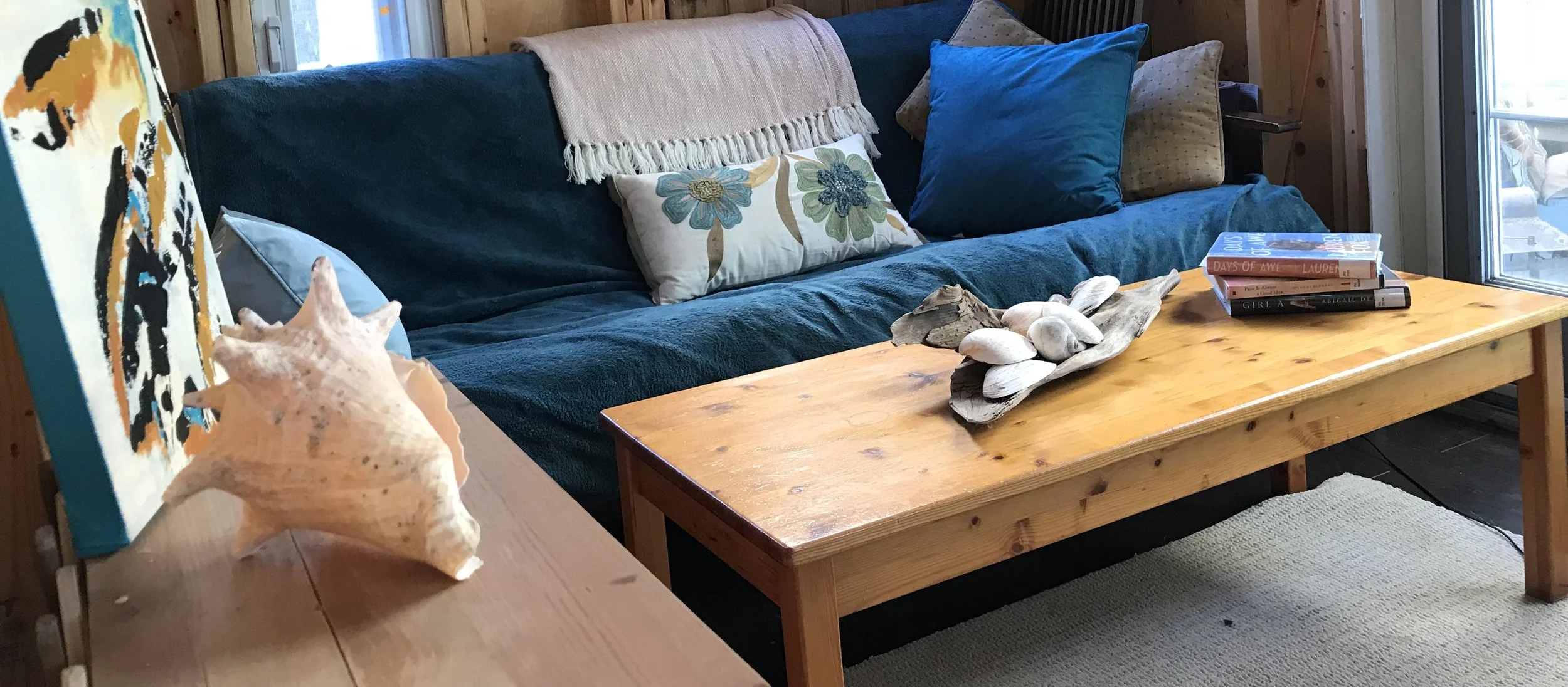Deep Relaxation for Good Health
/Imagine you’ve arrived at your favorite vacation spot. All the work of getting there is over. You’ve successfully set aside your responsibilities. You breathe in deeply and sigh out a long, well-deserved exhale… Finally, you can relax.
What if I told you relaxation doesn’t have to cost a thing—or require two weeks off work? It’s true. You can consciously shift your nervous system into “vacation mode” anytime. Yes, it takes a little practice, but it’s entirely doable.
In the last two blog posts, we explored the stress response and how chronic stress can negatively impact both mind and body. We’ve also discussed the importance of finding ways to deeply relax the nervous system. But what exactly is the “relaxation response”?
How I Found True Relaxation
In my late teens, I was chronically stressed and diagnosed with generalized anxiety disorder. Reading The Relaxation Response (1975) by Dr. Herbert Benson was a turning point for me—it sparked a lifelong journey into non-pharmaceutical relaxation techniques.
Much of what we know about stress can be traced to Hans Selye, the endocrinologist who first coined the term “the stress response”. The “relaxation response,” on the other hand, is credited to Dr. Benson, a Harvard Medical School professor and cardiologist. He passed away in 2022, leaving behind a powerful legacy in the field of mind-body medicine.
I was first introduced to techniques like breathing exercises and visualization in the 1980s but my go-to stress relief tended to be exercise.
That began to change in 1985, when I started teaching aerobics. At the end of each class, I guided participants through stretching and deep breathing. Sometimes, I included visualization or progressive relaxation techniques. Those last five minutes felt like a reward after all the physical intensity of an aerobics class.
In the '90s, as the manager of a fitness studio, I invited yoga teachers to offer special classes. Back then, yoga was still seen as a fringe practice—hard to imagine now! But its growing popularity has coincided with rising awareness of how deeply stress undermines health.
By 2007, I began formally studying yoga and Ayurveda. Through regular practice of restorative yoga postures, mindful breathing, body awareness, and meditation I experienced firsthand how deeply these tools can shift both the mind and body into a deeply relaxed state. These changes aren’t just subjective; they’re measurable.
What Is the Relaxation Response?
The relaxation response is the body’s way of returning to balance—or homeostasis. Our systems have a surprisingly narrow range of tolerance when it comes to vital signs like body temperature, heart rate, blood pressure and oxygen and glucose levels in the blood. Stress disrupts that balance, initiating physiological changes meant to keep us alive during emergencies. But we’re not meant to stay in that heightened state for long periods of time.
The relaxation response restores equilibrium. Like the stress response, it's managed by the autonomic nervous system (ANS), which has two branches:
The sympathetic nervous system speeds things up (fight-or-flight)
The parasympathetic nervous system slows things down (rest-and-digest)
Here’s what shifts when we move from stress to relaxation:
Heart rate slows
Blood pressure returns to normal
Lung function stabilizes
Stress hormone production decreases
Digestion resumes (including bile production)
Blood sugar levels normalize
Circulation improves, especially to the digestive system and extremities
Emotions stabilize, and the brain becomes more receptive and creative
It’s clear: to function without burning out, our bodies need time to recover from stress.
Why Modern Stress Is Different Than What Our Ancestors Faced
In the past, our ancestors faced life-or-death threats: predators, lack of shelter, hunger. The danger was immediate, and you either survived or didn’t. Either way, the body and mind regained balance and moved on.
Today, the threats are often psychological—threats to our identity, social status, or security. They’re subtle, chronic, and open-ended. As a result, we stay in a low-grade stress state far longer than nature intended. Over time, this wears us down—often without us realizing it until we become sick and exhausted.
We can’t eliminate modern stressors entirely. Just turning on the news or scrolling social media exposes us to more than our nervous systems were ever designed to handle. In some ways, we have it better than our ancestors—but biologically, our bodies haven’t evolved fast enough to cope with modern challenges.
That’s why “conscious adaptation” is key. We sometimes have to consciously induce the relaxation response if we want to maintain our health and resilience.
The good news? We have powerful, proven tools at our fingertips. Techniques like yoga, breathwork, mudras (hand gestures), reflexology, Yoga Nidra, and meditation all help transition the body out of stress mode and into recovery.
In upcoming posts, I’ll dive deeper into some of these tools—and how to incorporate them into daily life for long-term wellbeing.
Stay well!
Lori

